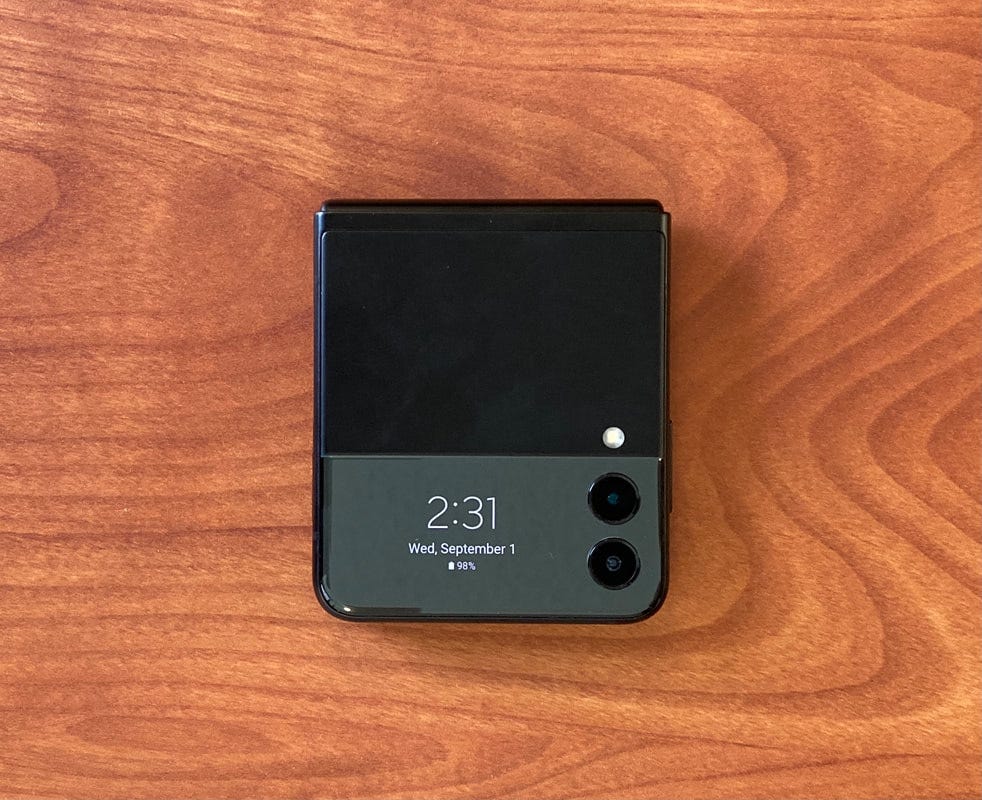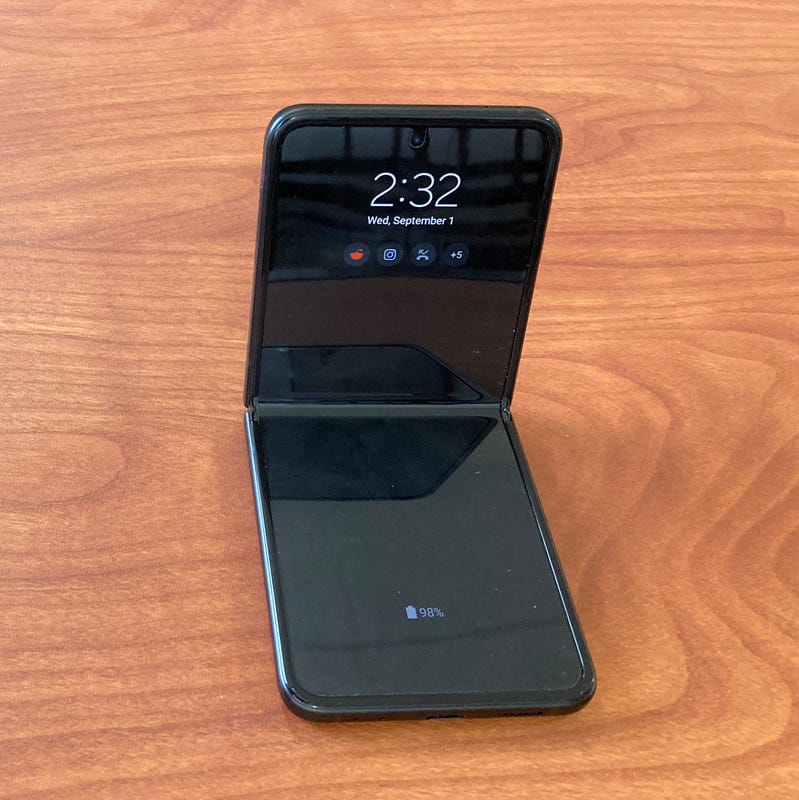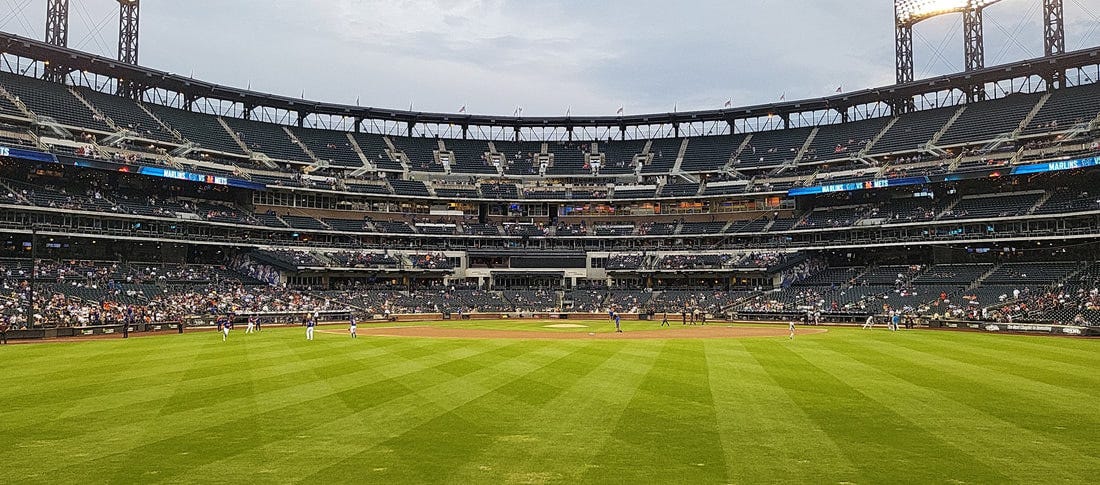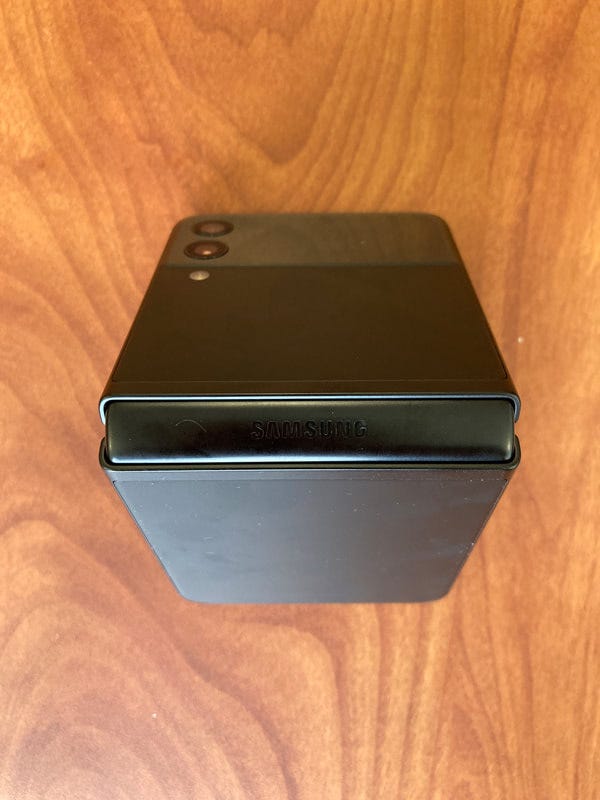Galaxy Z Flip 3 Review: The Foldable That Made Me Switch!

© Samsung
The Galaxy Z Fold and Flip 3 have been in the hands of reviewers for a few weeks now, and the consensus is clear: The Galaxy Z Flip 3 5G is the first foldable smartphone that can actually be recommended to real consumers. As a lifelong Apple user entrenched into the Apple iCloud ecosystem, it would take a compelling phone for me to abandon my iPhone—but the Z Flip 3 was good enough, and cool enough, for me to take the leap.
The Z Flip 3 marks the most notable improvements from Samsung since they released the original Galaxy Z Flip a year and a half ago. The Z Flip 5G brought a 5G antenna to the phone and other minor improvements—though not enough to warrant much notice. However, this new Z Flip brings upgrades in display technologies, build quality, durability, and more.

Galaxy Z Flip 3 Cover Display © Brady Snyder, 2021
The new displays are the immediate difference makers in daily use for the Z Flip 3. The cover display is now four times larger, and shows up to four lines of text in an always-on format. This allows use for notifications and widgets including music controls, weather, and quick timers. While this may seem intangible in daily use, it is quite the opposite. The compactness of the Z Flip 3 is nullified if you have to flip the device open every time; however, the cover display allows you to receive vital information without that added step.

6.7" AMOLED Display © Brady Snyder, 2021
The inner, 6.7" AMOLED (Active Matrix Organic Light Emitting Diodes) display is upgraded as well with adaptive refresh rate, which allows the phone to automatically toggle between 60 Hz and 120 Hz refresh rates depending on the situation. It gives the phone a smoother user interface overall, and is crucial to serious gaming on-the-go. Unfortunately, unlike other Samsung phones with this technology, there is currently no setting to apply the high refresh rate all of the time.
Most likely, the lack of this setting is due to the already underwhelming battery. The two-cell, lithium polymer battery inside the Z Flip 3 is rated at just 3300 mAh, which is significantly less than other phones in its class. Of course, this is a casualty of the fold, which requires the phone to be relatively thin when folded shut. In my daily use of the phone, the battery was decent, but falls short of flagships like the Galaxy S21 Ultra and the iPhone 12 Pro Max. Charging conveniently throughout the day—in cars, at desks, et.—I was able to make the Z Flip 3 last a full day without much "battery anxiety."

© Samsung
Another feature that is cannibalized by the folding form factor of the Z Flip 3 is the cameras. The main cameras are dual 12 MP sensors that are wide and ultra wide apertures. The cover display allows these cameras to be used as selfie cameras, though there is an inner, 10 MP wide sensor for traditional selfies. All cameras are capable of shooting 4K video at 30 FPS, though the main cameras can be set to record 4K HDR at 60 FPS. While these cameras are adequate in ideal conditions, they struggle in subpar, low light situations. Specifically, the selfie camera quickly becomes grainy and pixelated in dark scenes. In those great scenarios, though, the Z Flip 3 is more than capable—the picture below was taken with the Flip at Citi Field and the finished product is fantastic.

Captured with the Galaxy Z Flip 3 © Brady Snyder, 2021
As strictly a smartphone the Z Flip 3 elegantly blends comfort and functionality. Under the hood, it features the Snapdragon 888 5G chip and eight gigabytes of RAM–the same as other Android flagship phones. For the first time in the Flip line of phones, the Z Flip 3 sacrifices nothing in terms of computational performance. In terms of comfort, the hinge can be set to any position, allowing the phone to be comfortable cradled for phone calls, mounted for pictures, and positioned for many other unique use cases.

© Brady Snyder, 2021
The positive changes to the durability of the Z Flip 3 solidify it as a foldable ready for consumers. The Flip has been certified as IPX8 water resistant, which means it can be submerged in up to 1.5 meters of water for as long as 30 minutes. However, it was not certified for dust resistance, and it remains to be seen whether dust entering the phone will be a long-term issue.
Additionally, the aluminum used for the body of the phone has been strengthened to a material Samsung calls "Armor Aluminum." The screen is the same plastic front we saw in the original Z Flip, though the Z Flip 3 now comes with a pre-installed plastic screen protecter that protects the actual screen. Samsung recommends that users keep the protector on for the life of the phone, essentially making the protector a part of the display. The outer display is covered with Gorilla Glass Victus, which is the strongest glass Gorilla Glass has produced thus far. Overall, it is hoped that these changes will end the durability questions brought forth with Samsung's original foldables, but only time will tell.
It's clear that is you're looking for the highest end device, you won't find it in the Z Flip 3. You'll find it in the Galaxy S Series, the iPhone Pro series, or even in the Z Fold series. However, if you're looking for a small, fun device that changes the way you use your phone—the Z Flip 3 may be the phone you're looking for.
I was, I ditched my iPhone for the Z Flip 3 and have not looked back since. If you're considering making the same switch, stay tuned, because I'll be documenting the peaks and valleys of this switch from iPhone to Android.




